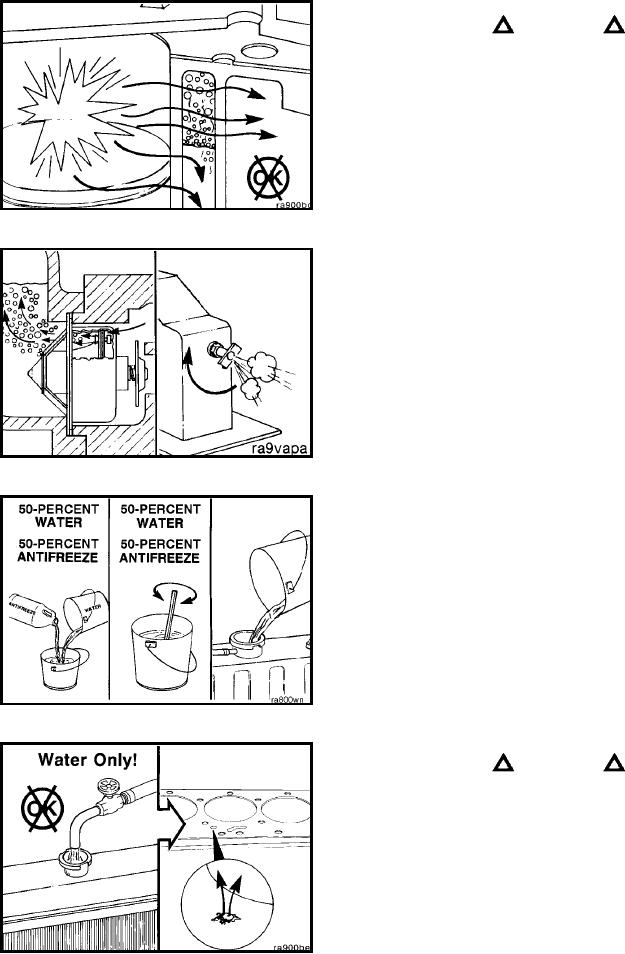
TM 5-2420-230-24-2
Cooling System Diagnostics (008-020)
B3.9 and B5.9 Series Engines
Page 8-26
Section 8 - Cooling System - Group 08
CAUTION
The engine coolant passages must be completely filled
with coolant.
During operation, entrapped air mixes with the coolant,
which results in cavitation corrosion and poor heat transfer.
Highly aerated coolant can cause localized overheating of
the cylinder head and block, which can result in a cracked
head, scored cylinder, or blown head gasket.
During filling, air must be vented from the engine coolant
passages. The air vents through the ``jiggle pin'' openings
to the top radiator hose and out the fill opening. Additional
venting is provided for engines equipped with an after-
cooler. Open the petcock during filling.
NOTE: Adequate venting is provided for a fill rate of 14 liters
per minute [3.7 gallons per minute].
NOTE: Excess air in the cooling system can lead to over-
heating and low coolant levels.
NOTE: A 50-percent mixture of antifreeze and water must
be premixed before filling the system. The ability of anti-
freeze to remove heat from the engine is not as good as
water, so pouring antifreeze into the engine first could con-
tribute to an overheated condition before the liquids are
completely mixed.
A mixture of 50-percent ethylene-glycol base antifreeze is
required for operation of the engine in temperature envi-
ronments above -37C [-35F]. A mixture of 40-percent
water and 60percent antifreeze is recommended for tem-
peratures below -37C [-35F]. Never use more than 60-
percent antifreeze.
CAUTION
Never use water alone for coolant. Damage from cor-
rosion can be the result of using water alone for cool-
ant. The small holes in the head gasket are especially
susceptible to plugging. These holes are orifices and
their size is critical. Do not enlarge the size of the
orifices. To do so will disturb the coolant flow and will
not solve an overheating problem.
Water will cause rust formation, reducing the flow in the
smaller coolant passages.
L-1082

